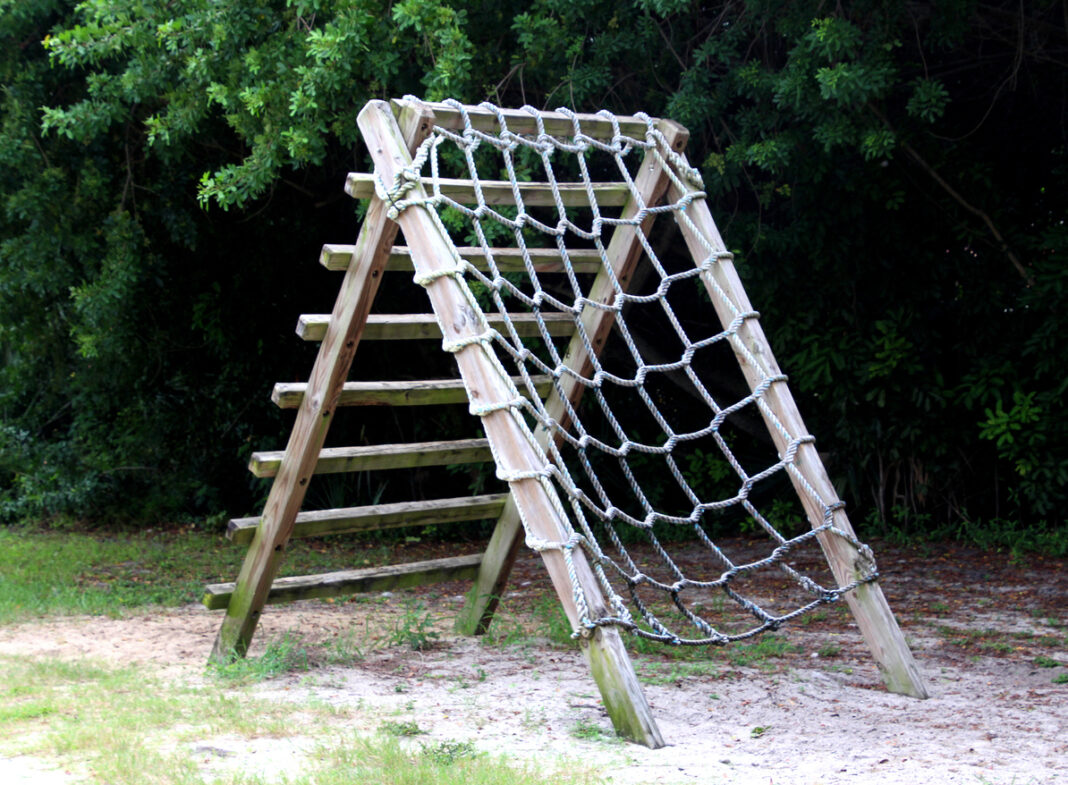Over the last few columns I’ve given you some tips to master different obstacles and ramp up your training. This week, we’ll tackle the cargo net.
Most people assume cargo nets are easy and they’ll be able to smash it out and just climb up or over it – wrong! In most cases, if you get this wrong you will lose race-time and burn a lot of energy that you’ll need for other obstacles.
The net can be what I call a ‘flex’ net, this means that it moves and flexes up down, and is not strung tight (apart from the tie points to make it safe). Then there is the ‘tight’ or ‘springy’ net, which meansthe cargo net is strung so tight you feel as though you can nearly bounce on it. Don’t be fooled – both nets can be one of the toughest obstacles to take on.
To become good and efficient with climbing cargo nets you need to work on:
- Good hand grip and strength (you don’t want your forearms to blow out when climbing!)
- Flexibility, especially in your hips
- Good core strength
- Strong legs, particularly quads
- Back strength, to help with the pulling movement
- Focus on hand positioning
- Climbing with purpose
Cargo net technique
- When climbing, for safety, always try to have three points of contact on the net.
- When grabbing the cargo net, grab and hold the knots of the net to give you more to hold on to. Don’t grab the parallel rope; your grip hand can slip off and you will find it hard to regain your position.
- It is okay to just grab and hold the vertical rope that is centered in the middle of your body when climbing, or, you can hold two rope knots.
- Step up and lift your knee and leg up high so you can get your foot onto a higher cargo net square. The higher you can get your foot and knee, the faster you will climb.
- Your foot will be stepping on the horizontal rope. You can move your foot across to the knot in the rope as you push up to climb – this will give the foot a stronger position to push from, and keep the rope more stable.
- When you start to climb, take your time and look for where your next hand and foot positions will be.
- Keep your body close to the cargo net while climbing and descending. When descending, keep your body close to the net and climb down with the same action as you climbed up.
- Try to keep your body relaxed, it will be easier to climb!
Training
- 5 mins skipping
- 10 x hanging knee raises
- 30 secs starts: in the crouched starting position for a race, alternate your feet back and forth, keeping your hands in the same spot
- 15 x lying hip raises
- 3 x 10m leopard crawl: climbing the net will use a very similar body position
- 10 x hanging single knee raises, each leg
- 2 x cargo net climbs, if you have access to one
More stories:



